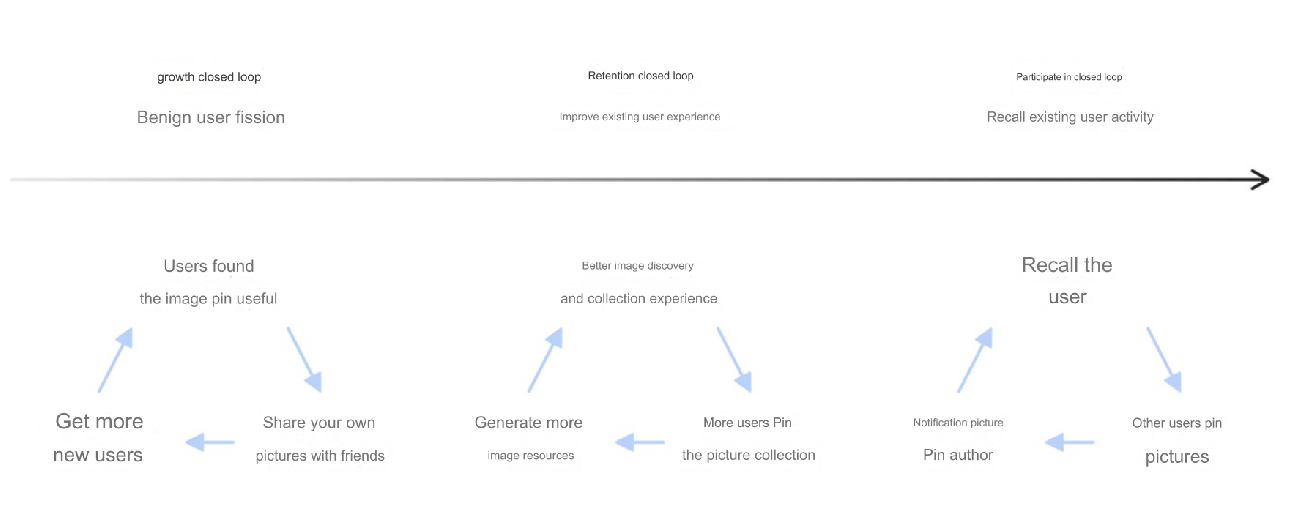In today’s rapidly evolving business landscape, the role of a product manager (PM) is pivotal. This article explores nine essential habits that every successful product manager must cultivate to thrive in a competitive environment.
The Crucial Role of a Product Manager
As the core driver of product development, product managers must excel in a diverse range of skills and behaviors. They are responsible for product planning, design, and promotion, while also ensuring seamless communication and collaboration across departments. Let’s dive into the nine high-impact habits that can pave your path to success.

I. Nine High-Performance Habits for Product Managers
The role of a product manager is both demanding and dynamic, requiring continuous learning and adaptability. Developing strong habits is key to thriving in this competitive field. Here are the nine habits every product manager needs:
1. User First
Always prioritize user needs. A product manager must deeply understand their target audience by conducting user research, interviews, and data analysis to uncover pain points, expectations, and behavioral patterns. This understanding lays the foundation for creating products that users love.
Example:
While designing a social networking app, a PM identified a high demand for privacy protection and personalized recommendations through extensive user research. Consequently, they enhanced privacy settings and integrated intelligent recommendation algorithms, significantly improving user experience.
2. Clear Goals
Define product goals and vision with precision. At the start of a project, a PM should work with their team to establish core objectives, clarify the problems the product aims to solve, identify target users, and set measurable market outcomes. Clear goals enable effective strategies and actionable plans.
Example:
An online education platform targeting improved learning efficiency might focus on features like personalized learning paths, real-time interactive teaching, and intelligent reminders, ensuring all efforts align with this primary objective.
3. Data-Driven Decision Making
Leverage data for informed decision-making. PMs should build a mindset around analyzing key metrics like user engagement, retention rates, and conversion rates. Data insights reveal strengths and weaknesses, guiding product optimization.
Example:
For an e-commerce app, data analysis revealed a high cart abandonment rate during checkout. By simplifying the checkout process, the PM significantly boosted the app's conversion rates.
4. Lifelong Learning
Stay curious and passionate about learning. The product field evolves constantly, and PMs need to stay updated on industry trends, new technologies, and emerging methodologies to enhance their skills and perspective.
Example:
With the rise of artificial intelligence, PMs who proactively learn about its applications can integrate AI into products, creating innovative solutions and maintaining a competitive edge.
5. Effective Communication and Collaboration
Strong communication and collaboration skills are indispensable. PMs must coordinate with diverse teams, including engineering, design, marketing, and sales. Clear articulation of ideas and active listening foster a collaborative environment.
Example:
During product development, a PM worked closely with engineers to solve technical challenges, partnered with designers to refine UI/UX, and collaborated with the marketing team to devise effective promotional strategies.
6. Innovative Thinking
Be bold and creative in problem-solving. PMs should seek new opportunities and solutions that add unique value to their products. Techniques like brainstorming, competitor analysis, and user feedback can spark innovation.
Example:
Apple's product managers revolutionized the smartphone market with the iPhone, introducing multi-touch technology and a sleek, user-friendly interface that defined a new era.
7. Agility and Adaptability
Adapt quickly to market changes and evolving user needs. PMs must be able to adjust product strategies and plans promptly to stay relevant in a fast-paced environment.
Example:
During the COVID-19 pandemic, PMs swiftly launched remote working, online education, and telehealth products, addressing users’ emergent needs.
8. Project Management Excellence
Effectively manage projects to ensure timely delivery. PMs should create detailed plans, outline tasks and deadlines, allocate resources efficiently, and monitor progress while addressing challenges as they arise.
Example:
Using project management tools like JIRA or Trello, PMs can visualize workflows, streamline tasks, and improve overall efficiency.
9. Self-Reflection
Regularly reflect and refine your approach. PMs should evaluate their own work, learn from mistakes, and continuously enhance their skills.
Example:
By keeping a work journal or conducting post-mortem reviews with the team, PMs can analyze both successes and setbacks, leveraging lessons learned for future projects.
II. In-Depth Analysis of the Nine Habits
1. User First
Always prioritize user needs by conducting research, interviews, and data analysis to deeply understand your target users.
The core of the product manager’s perspective lies in being user-centric. PMs must not only identify user needs and pain points but also delve into usage scenarios, habits, and psychological demands. Through tools like user research and surveys, PMs can better grasp user preferences and behaviors, enabling the design of products that align with user expectations.
Example:
For a social networking app, extensive user research revealed a high demand for privacy protection and personalized recommendations. Consequently, the PM enhanced privacy settings and implemented smart recommendation algorithms, significantly improving the user experience. Much like the "black box" model suggests, an internet product is a tool that brings users both joy and value. To achieve true product value, products must be built around user needs.
2. Clear Goals
Clearly define product goals and vision, and work with your team to establish core objectives.
When setting professional goals, PMs should assess their strengths, weaknesses, interests, and values while considering market demands. Once these are clear, PMs can formulate specific, measurable goals aligned with both their career aspirations and market needs. By focusing on the product’s objectives, PMs clarify the problems to be solved, the target audience, and the desired market impact. Clear goals enable actionable strategies and effective plans.
Example:
An online education product with a goal to improve learning efficiency might include features like personalized learning paths, real-time interactive teaching, and intelligent study reminders. By breaking down strategic goals into quantifiable metrics for each department and team, PMs ensure a clear direction for product development.
3. Data-Driven Decision Making
Leverage data to make informed decisions, and adopt an analytical mindset to interpret various metrics.
In the era of big data, businesses are transitioning from “experience-driven” to “data-driven” models. PMs must use data to identify business pain points and opportunities, enabling efficient growth. Metrics such as user activity, retention rates, and conversion rates are essential for uncovering strengths and weaknesses in a product, providing a foundation for optimization.
Example:
For an e-commerce app, user behavior analysis revealed a high cart abandonment rate during checkout. The PM simplified the checkout process, resulting in a significant increase in conversion rates. Metrics like order success rates and sales growth become key indicators for driving optimization and growth.
4. Lifelong Learning
Maintain a passion for learning and curiosity about industry trends, new technologies, and emerging strategies.
The dynamic nature of the product field demands that PMs stay updated and continually expand their skill sets. Successful products not only meet user needs but also maintain profitability in competitive markets, which requires constant learning and adaptation.
Example:
With the rise of artificial intelligence, PMs who study how to integrate AI into their products can introduce new competitive advantages. Methods such as attending industry events, reading professional materials, and participating in online training can build a robust knowledge base and improve competencies.
5. Communication and Collaboration
Develop strong communication and collaboration skills to work effectively across teams.
Effective communication is essential for PMs, who must collaborate with departments like development, design, testing, marketing, and sales. Clear articulation of ideas and active listening fosters trust and teamwork, ensuring smooth product progress.
Example:
During the product development process, PMs might collaborate with developers to solve technical challenges, work with designers to create intuitive user interfaces, and coordinate with marketing teams on promotional strategies. Proactive communication and empathy can ensure seamless collaboration across all stages of development.
6. Innovative Thinking
Be bold, think outside the box, and seek new opportunities or solutions.
PMs should continuously look for innovative ideas to bring unique value to their products. Techniques like brainstorming, competitor analysis, and user feedback can inspire creative approaches. A broader perspective helps PMs uncover unmet needs, even those users may not articulate.
Example:
Apple’s PMs revolutionized the smartphone industry by introducing multi-touch technology and sleek, user-friendly interfaces in the iPhone, redefining user expectations and setting new industry standards.
7. Agility and Adaptability
Adapt quickly to changing market conditions and evolving user needs.
In fast-moving environments, PMs must be agile, capable of adjusting strategies and plans to remain relevant. A results-oriented approach—starting with the end goal and working backward to define actionable steps—ensures alignment with shifting demands.
Example:
During the COVID-19 pandemic, PMs rapidly developed products for remote work, online education, and telemedicine to meet users’ urgent needs. Agile responses ensured that products remained valuable and competitive in a changing landscape.
8. Project Management
Manage product projects effectively to ensure on-time delivery.
PMs must create detailed project plans, define tasks and milestones, allocate resources efficiently, and monitor progress. Tools like JIRA and Trello can visualize workflows, increasing efficiency and ensuring timely project completion.
Example:
By using Gantt charts and breaking down projects into manageable phases, PMs can turn abstract goals into concrete deliverables, ensuring that projects are completed on schedule with high quality.
9. Self-Reflection
Regularly reflect and refine your work methods to continually improve.
Self-reflection helps PMs identify areas for growth, learn from mistakes, and enhance their skills. Writing journals or conducting project reviews provides valuable insights into successes and shortcomings.
Example:
After completing a project, a PM might organize a team retrospective to analyze achievements and identify areas for improvement, using the findings to inform future projects.
III. Conclusion
Cultivating these nine habits will empower PMs to continually enhance their skills and thrive in competitive markets.
From understanding user needs to setting clear goals, leveraging data, embracing lifelong learning, fostering communication, and nurturing innovation, each habit plays a critical role in a PM’s success. Agility, effective project management, and self-reflection round out the toolkit, ensuring adaptability and continuous growth.
By embedding these habits into daily practice, product managers can create successful products, achieve professional growth, and realize their value in an ever-evolving industry.







